MEANING AS MEDICINE
Resident Engagement for Senior Living
1. Meaning as Medicine
When it comes to our health and wellbeing, we are just as likely to be impacted by our social surroundings as we are by our body’s health. The social determinants of health, including where we live, our education, and who we interact with at home, during work and in the community, all determine how healthy we are today and what our future health might be. In fact, they can impact up to 70% of a person’s overall health.

Senior living providers can have a positive impact on residents’ social determinants of health by offering personalized engagement so they can live meaningfully. Providers need to offer more than just medicine. There are many non-drug options that can help health and wellbeing. A “social prescription” is something that senior living professionals can use to offer these non-drug solutions that are based on life history, individual preferences, and current abilities. These types of “prescriptions” are affordable and can have a more positive impact on health when compared to medicine. A social prescription considers who a person really is and offers options to improve their wellbeing in a meaningful way.
However, most residents do not experience meaningful engagement each day in senior living communities. In fact, resident engagement has been viewed as ‘nice to have’ and ‘fun’, and a regulatory requirement but not an important part of a resident’s overall wellbeing. Yet, if residents are engaged in a meaningful and personal way, it will decrease their loneliness, keep them independent longer, and improve their wellbeing. This in turn offers senior living providers the opportunity to experience improved clinical and financial outcomes
Are you interested in the future of resident engagement and the concept of social prescription?
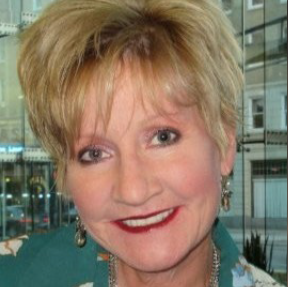
“Resident engagement is today’s most untapped opportunity for enhancement of person-centered care, high quality of life for residents and improved business indicators. I believe it has tremendous potential for us, our residents, and their families.”
– Julie Ackley, Corporate Director of Memory Care at Acts Retirement-Life Communities, Inc.

“Linked Senior is a brand standard for us and minutes of resident engagement per day are now one of our key metrics. Our investment in the technology has been 100 percent worth the return.”
– Dawn Worsley, President, National Certification Council for Activity Professionals (NCCAP), Linked Senior Resident Engagement Institute Faculty Member
The rise of the Chief Engagement Officer
2. The State of Resident Engagement
One of the most negative impacts of the Covid 19 pandemic was social isolation. An Altarum study from July to August of 2020 of 365 nursing home residents in 36 states found that they felt both lonely and isolated. Seventy-six percent felt lonelier and 64% reported no longer leaving their rooms to socialize with other residents.
Even before the beginning of the coronavirus pandemic, a Centers for Disease Control and Prevention report from 2016 showed there is plenty of room for improvement when it comes to making engagement better in senior living. According to the report, long-term care residents are typically receiving only 11 minutes of engagement per day outside of assistance with activities of daily living. Assisted living residents are only receiving 20 minutes of engagement each day.
A study by AARP found that social isolation can be as bad for your health as smoking 15 cigarettes a day. According to a study published in 2015 in Perspectives on Psychological Science, social isolation is a risk factor for death.
“Social isolation will be a greater threat to healthy aging than obesity.” - The American Psychological Association
Sadly, engagement opportunities for residents mostly consist of the 3Bs: Bingo, Bible, and Birthdays. Beyond just the number of minutes spent engaging residents, providers may also struggle to focus attention on residents most in need of meaningful engagement. Without this, these individuals can often feel neglected, bored, and lonely which can lead to the overuse of antipsychotic drugs or other types of harmful medications.
The truth is, a life enrichment department may not have enough staff and employee turnover can be high, leading to burnout for those who do stay. A Linked Senior survey of resident engagement leaders in 2020 found that 74% felt that staffing shortages were stopping them from engaging all their residents meaningfully which hurts their health and wellbeing.
A Linked Senior survey of activity and life enrichment professionals in February 2023 found that 82% felt that they couldn't meaningfully engage all of their residents because of staff issues.

Linked Senior empowers your resident engagement efforts.
3. Enabling the Model of Social Prescription
For senior living providers to offer purposeful engagement to all residents they need to implement a social prescription model. This includes focusing on the following areas:
3.1 Fighting Ageism
Aging itself isn’t negative, however we see ageism in the many undesirable references and representations in our society. According to data in the United States, happiness tends to peak around age 30 and then decline through midlife until it rises again after age 70.
We are certainly not alone in wanting to fight the harmful ageism that seems to be in every part of our communities. Every day there are exciting examples of people and organizations who are determined to tear down generational silos and bring back the idea that the elders of our communities should be listened to, respected, and valued. Pioneer Network is the leader of the culture change movement, and the principles that guide their movement offer senior living communities a roadmap to purpose and how to fight ageism.
We are fighting ageism by partnering with senior living communities on events that celebrate aging. In partnership with Forest Hills of DC, we have hosted a Longevity Fun Run for the past two years. In 2021, this event was covered by the BBC in this video and in 2022 the event won the Program of the Year award from AHCA.
3.2 Interdisciplinary Team
It is time that every community starts to consider life enrichment as important as any other discipline. Activity and life enrichment professionals should have an opportunity to be represented in some capacity in an organization’s C-suite. With that representation, a life enrichment director could measure and manage all resident engagement for the community and improve older adults’ wellbeing through social prescriptions. This staff member needs to show how well the community is meeting the preferences of their residents as part of their quarterly performance review and the annual performance review of the organization. As preferences are being met and satisfaction is high, engagement has an impact on other clinical outcomes just as effectively as other medical solutions.
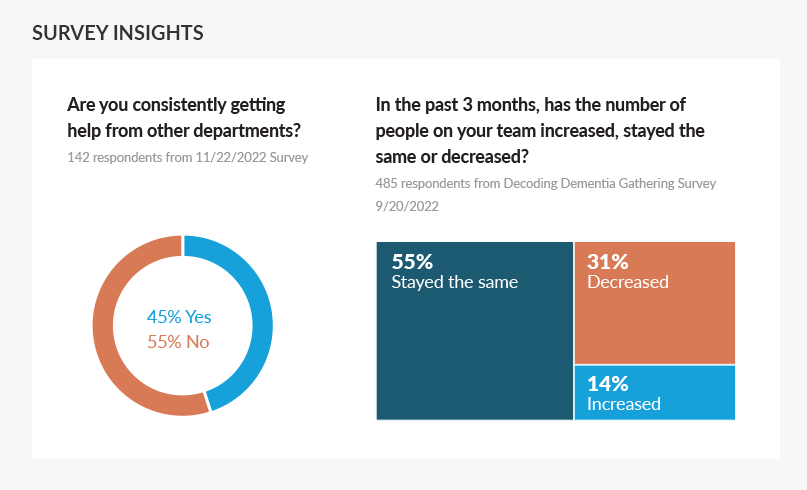
Resident engagement is the responsibility of all: Physicians, nurses, dietary aides, and anyone working in a senior living community needs to be educated in how to learn a resident’s life story so that they can engage them based on their unique needs and preferences.
Linked Senior has launched the Resident Engagement Institute to empower senior living activity and life enrichment care partners with education, tools & support to elevate resident engagement for all Elders
Hear From a Resident Engagement Champion…
Linked Senior technology helped Marian Manor, a Coordinated Services Management (CSM) community, increase their staff to resident engagement ratio by almost 4x in December 2021 by helping staff work in an interdisciplinary way.
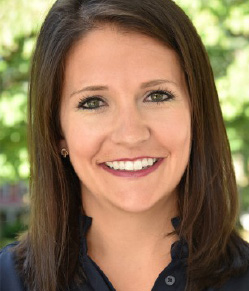
“Our investment in technology to support interdisciplinary work and improve efficiency in the area of resident engagement has helped bring our mission to life.”
– Brea MacBrien, Regional Director of Sales & Marketing, CSM
3.3 Budget and Education
The life enrichment department isn’t considered a place where a senior living community can directly make money which explains why many times they are underfunded.
They may have money to help them create their engagement calendar since that can be used to support the organization’s marketing efforts, but the budget doesn’t include funding to help them with meaningful resident engagement needs. A 2018 Linked Senior survey across care settings found that more than half said that documentation was the most challenging part of their job because they did have tools to use beyond paper.
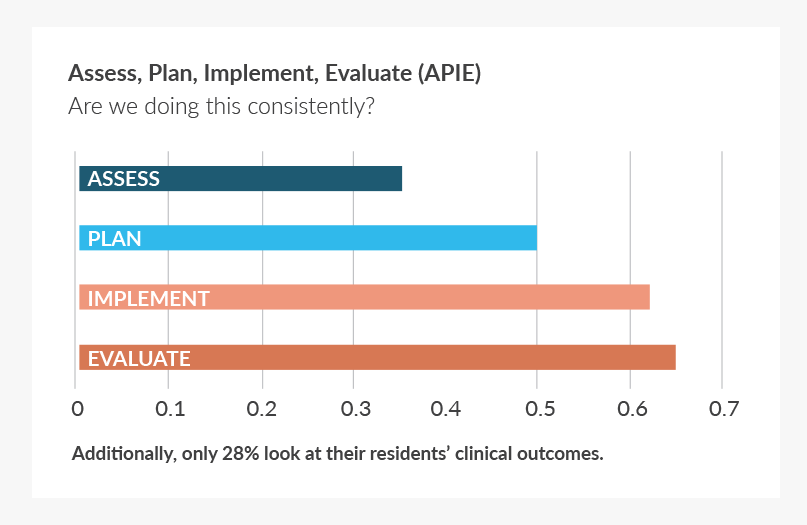
Even in our technology-driven world, much of the important assessment, planning, implementation, and evaluation that an activity professional does is still paper-based. Paper-based documentation can prevent them from having the time, data, and insights they need to get to know residents and engage them in a meaningful way.
We must give more funding to resident engagement. This way, every resident in a community is receiving the most meaningful and helpful care based on their needs and preferences. It will also
help the organization’s bottom line by increasing satisfaction, improving health outcomes, and maintaining occupancy.
To improve staff training, care quality and team development, providers should look for proven certification from professional organizations such as the National Association of Activity Professionals (NAAP) and the National Certification Council for Activity Professionals (NCCAP).
Discover how Linked Senior helps staff provide opportunities for social engagement by providing technology that staff can use to understand how to plan programs based around common preferences expressed by residents.
3.4 Standards and Best Practices
Empowering Data.
Linked Senior led research that include internal data analysis, Resident Engagement Index Score (REIS) findings and a literature review of physical and cognitive engagement recommendations for the aging population, we are proposing that residents should be engaged in a meaningful way for 35 minutes per day. Meaningful indicates that individuals are engaged with how they prefer. The literature review indicated that seniors showed lower risk in developing cognitive concerns and depression, as well as improved physical health outcomes. Therefore, how many staff does a community need to engage each resident at 35 minutes a day? Staple programs usually consist of large and small groups and one-on-one engagement at the standard size of – 15, 5 and 1 respectively.

Hear From a Resident Engagement Champion…
Senior Resource Group transforms resident and staff engagement with supportive technology.

“Linked Senior is a brand standard for us and minutes of resident engagement per day are now one of our key metrics. Our investment in the technology has been 100 percent worth the return.”
– Melissa Dillon, Corporate Director of Memory Care, Senior Resource Group
Together, we can create a system where the social prescription given to an older adult is as important as any clinical or medical prescription. Contact our team to get started today.
A Resident Engagement Framework.
Using conversations with and survey answers from professionals in senior living, Linked Senior has found that there are three key resident engagement questions that providers need to be asking themselves:
Are we…
Engaging everyone? Starting with choice and preferences? Enabling wellbeing and outcomes?
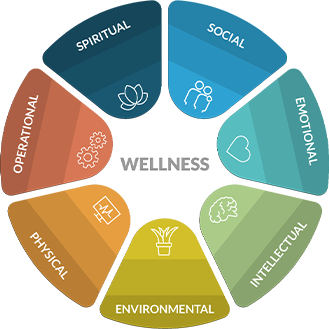
“Wellness is…a state of complete physical, mental, and social well-being, and not merely the absence of disease or infirmity.”
– The World Health Organization
To answer these questions, providers need to give staff members the right tools so they can focus on meaningfully engaging residents. The evidence based APIE model shows the important steps of engagement: assessing the needs of the resident, planning engagement based on those needs, implementing the plan in real-time and then evaluating their successes based on the changing needs and preferences of the resident. This can all be done more easily with the help of technology.
By tracking attendance electronically, life enrichment professionals can see how much time is being spent on one-on-one engagement compared to group engagement, how often residents are being engaged and residents’ satisfaction with their engagement. Staff can also more easily collect information about their residents and put it to use, so they can spend more time engaging with them rather than organizing, planning, and documenting.
Hear From a Resident Engagement Champion…
From January 2018 to January 2019, Silver Bluff Village went from engaging 57% of their long-term care residents to 97% which is a 172% increase!

“We tend to devalue activities and what they can do to benefit each resident. Now that the staff have a digital tool to help them optimize engagement, I as the Administrator can analyze their progress and success in real-time. We now measure and manage resident engagement – it is a key part of our business and strategy to help us deliver on our promise of person-centered care.”
– Lisa Leatherwood, MSN, RN, G-CNS, BC, Administrator, Silver Bluff Village
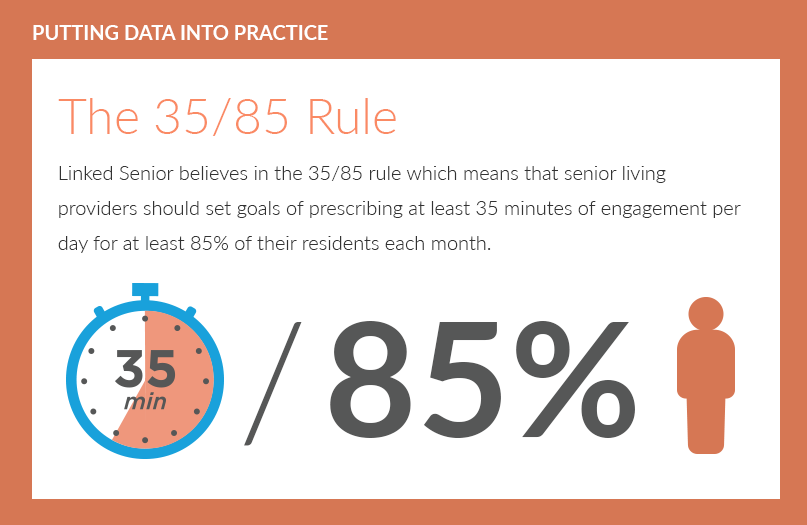
35 minutes of resident engagement per day...
3.5 Technology
Most communities cannot issue social prescriptions today because they simply do not have digital tools in place that allow them to assess, plan, implement and evaluate resident engagement based on data about every resident’s life story in real time. Once we move beyond paper, and invest in these technologies, we can help connect every resident to the activities that are most meaningful to them which will have the most positive impact on their health and wellbeing.
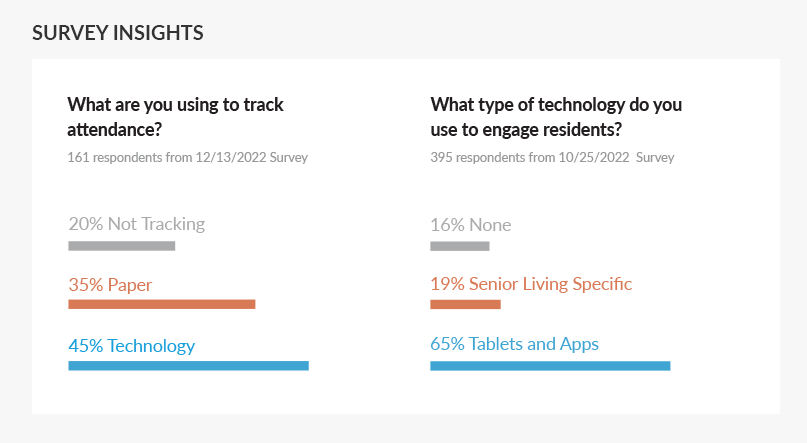
Hear From Resident Engagement Champions…
Traditions Management used Linked Senior to save more than 3 days of staff time per month per building and this helped staff engage residents at different levels, both individually and in groups, without requiring extra training
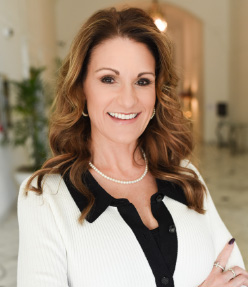
“Activities need to be purpose driven with a true value for every resident no matter their current level of cognitive functioning or preferences. Linked Senior raises the bar and makes programming amazing even when it comes to BINGO and birthdays.”
– Lori Horstman, Vice President of Cognitive Care for Traditions Management
Research from Linked Senior’s Elder Engagement Performance Improvement (EEPI) tool showed that 60% of senior living organizations still do not record activity attendance electronically.
Kendal at Oberlin Community in Ohio Linked Senior and other tools, the community provided 165+ more hours of staff time per month, 250+ hours of volunteer time and increased the number of one-on-one engagements by more than four times.
Hear From a Resident Engagement Champion…
For Americare, a Linked Senior client with communities throughout Kansas, Missouri, Tennessee, Illinois and Mississippi, staff members are very important to resident outcomes and one way to help them fully engage residents in a meaningful way is by providing them with the best tools and. Especially during the pandemic, technology helped prevent isolation.
“We haven’t got back to where we were with activities prior to COVID but technology like Linked Senior has really empowered the team. We are moving in the right direction.”
– Michelle Tolbert, Administrator, Americare
Discover how Linked Senior cost effective, ROI-centered service improves outcomes, helps increase compliance, boosts staff empowerment, lowers turnover and increases job satisfaction and revenue.
4. Proven Results
4.1 Resident Engagement Success
In 2017, Linked Senior partnered with the Responsive Group in Toronto and Western Oregon University to research resident engagement with funding from the Baycrest-led Centre for Aging + Brain Health Innovation (CABHI). The one-year study was with 185 residents from three Responsive long-term care and memory care communities who were grouped as: (1) Low-Engagement Residents (75 people) versus (2) High-Engagement Residents (110 people). The study found that being highly engaged in recreational activity is associated with increased cognitive functioning and social engagement, as well as decreased aggression and antipsychotic medication use. Watch this video about the study!

Providers, families, and residents have learned from COVID-19 that we need to be more flexible in programming, especially in memory care. Many residents have benefited from the increased attention in the form of 1:1 engagement and interventions. Linked Senior looked at customer data between 2020-2021 and found that one-on-one programming has increased a total of 326%.
Linked Senior looked at engagement data from its clients to understand how some of the best providers engage their residents and how their work can be improved even more. The data has been combined using Linked Senior’s attendance tracking product. It includes data from the Linked Senior programs and from non-Linked Senior programs in assisted living, memory care and skilled nursing from Quarter 4 of 2018:
• 42 minutes of engagement per day per resident
• 27% 1 on 1 programming and 73% group programs
• Response type to programs are 81% are active, 9% are passive, 7% refuse and 2% are asleep


4.2 Clinical Outcomes
With help from Linked Senior, Kendal on Hudson, NY, was able to reduce the use of antipsychotic medication for residents living in their Skilled Nursing unit from 17% to zero between 2016 and 2017. Read the case study here.
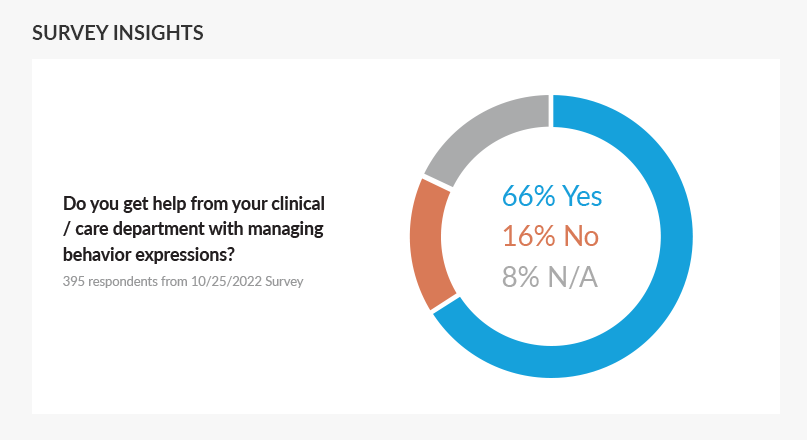
“At Kendal, we have worked with our internal teams to observe and understand behaviors and ensure that as much as possible the residents exhibiting them were present for all scheduled Linked Senior life enrichment programming. Our direct care team understands that engaging with a patient is not wasted time; it’s in fact, their core job. This has made all the difference in reducing antipsychotics in our community.”
– Chris Appel, RN, Director of Nursing, Kendal on Hudson
In the middle of the pandemic and during the worst staffing crisis the industry has ever reported, Janean Kinzie, Director of Social Wellness and Enrichment at American Senior Communities led the CARE Companions programs that dramatically reduced the use of antipsychotics by more than 2% for their 59 skilled nursing and memory care communities. Their average long-stay antipsychotic rate is now at 8.9%, compared to the national average of 14.2% reported by CMS.
4.3 Financial Outcomes
There is also a benefit to improving resident engagement for the sales and marketing department at a senior living community. Tina Sandri, Executive Director of Forest Hill of DC in Washington, D.C. has her Director of Marketing lead tours throughout her building with live observation of team members using Linked Senior programs for chair exercises, yoga classes, games, cultural activities, music, and other ways of engaging in real-time. See how she is improving occupancy with this technology.
“Our marketing team has been very happy with Linked Senior, using it to connect with existing and prospective families and showcase how great our engagement efforts are.”
– Tina Sandri, Executive Director, Forest Hills of DC
In the three months since Linked Senior was implemented in September 2021 at Presbyterian Senior Living, they have witnessed a 3% increase in satisfaction with activities from residents and families. Read the case study here.

“Linked Senior improves visits with families because the technology is accessible to different age groups, which fosters intergenerational connections. It is also making the team efficient by increasing the number of 1:1 and self-directed programs.”
– Alicia Fenstermacher, LSW/MSW, NHA, CDP, Vice President of Purposeful Living at Presbyterian Senior Living
5. A New Era of Resident Engagement
5.1 Old People Are Cool
The Linked Senior team believes in a world where people of all ages are respected and valued. Giving value and worth to only young people is costly. Negative images and words about the aging body and the idea of beauty have been particularly bad, especially for women. In February 2017, we created the. Old People Are Cool initiative to confront the harmful ageism that stops our communities from reaching their best potential and to support intergenerational collaboration. A Senior Housing News article highlighted the initiative in August 2017. This work helps us start important conversations around the world and challenges current ageist ideas.

In May 2022, Linked Senior and Forest Hills of DC submitted a proclamation to the Washington, D.C. City Council that was enacted and signed by Mayor Muriel Bowser to declare that month Old People Are Cool month.
5.2 The #ActivitiesStrong Initiative
Thousands of honest, passionate, hard-working individuals work in senior living communities across the United States and are 100% dedicated to the well-being of older adults in their care. There is a long and rich history of where the activities profession came from. However, activity and life enrichment professionals still have trouble getting affordable education and tools to help them improve resident engagement, especially for older adults living with Alzheimer’s disease and related dementias.
Many of these individuals have joined the #ActivitiesStrong initiative which was started by Linked Senior in March 2020 to acknowledge, educate and empower activity and life enrichment professionals around the world in collaboration with Activity Connection, the National Association of Activity Professionals (NAAP) and the National Certification Council for Activity Professionals (NCCAP).
Through the #ActivitiesStrong initiative, Linked Senior launched the first of its kind Resident Engagement Index Score (REIS) assessment to help senior living communities measure and manage their resident engagement strategies. The REIS data outcomes shown below are based on more than 700 submissions as of November 20, 2020. Corporate level responses were removed, and descriptive statistical analysis was used (n=428). Electronic platforms use results focused on assisted living, skilled nursing, and memory care and use inferential statistical analysis (n=440).

To truly understand the value of life enrichment, we need to imagine how the senior living industry would have fared without it during 2020. During this pandemic, I believe that almost all of the positive, innovative and proud moments in senior living communities came from activity and life enrichment directs and their residents- they are essential and they are true heroes that make our industry #ActivitiesStrong.”
– Charles de Vilmorin, CEO and Co-founder, Linked Senior
5.3 The Resident Engagement Institute
To improve resident engagement, provide thought leadership to the senior living industry and guide its customer and partners, Linked Senior announced in June 2021 the new Resident Engagement Institute (REI) as a way to give long-term care and senior living activity and life enrichment care partners with education, tools and support to improve resident engagement for all elders.
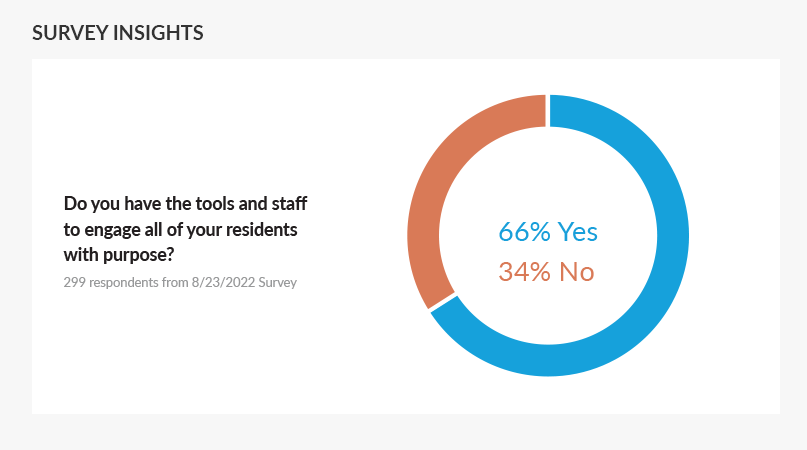

Dr. Jennifer Stelter, Psy.D., CDP, CADDCT, CCTP
Chief Engagement Officer (CEO) for the Resident Engagement Institute and the Director of Product Research at Linked Senior

The Institute offers quality education, consulting services, quarterly publications about best practices in resident engagement and help with product development and improvement.
“The Resident Engagement Institute is an opportunity for all of us to strengthen residential care across the country, including the workforce that delivers those services and supports.”
– Robert Espinoza, Vice President of Policy at PHI, Linked Senior Resident Engagement Institute Faculty Member
Download the PDF Guide
Download This Guide
Fill out the form for a downloadable PDF version of the guide you can reference later.
Request a Demo Today
See how Linked Senior’s best in class resident engagement platform fundamentally transforms the experience care partners want and Elders deserve.
About Linked Senior
Our mission is to enhance life in senior care. We support person-centered care through life enrichment and dementia engagement using simple technology and non drug therapy. Learn more or connect with our tea to learn how Linked Senior is a cost effective, ROI-centered service that improves outcomes, helps increase compliance, boosts staff empowerment, lowers turnover and increase job satisfaction and revenue. Get In Touch
© Copyright 2024 Linked Senior, Inc. | Privacy Policy
200 Massachusetts Ave NW, 7th Floor, Washington, DC 20001 PH (888) 577-1889 FX (202) 280-1270
